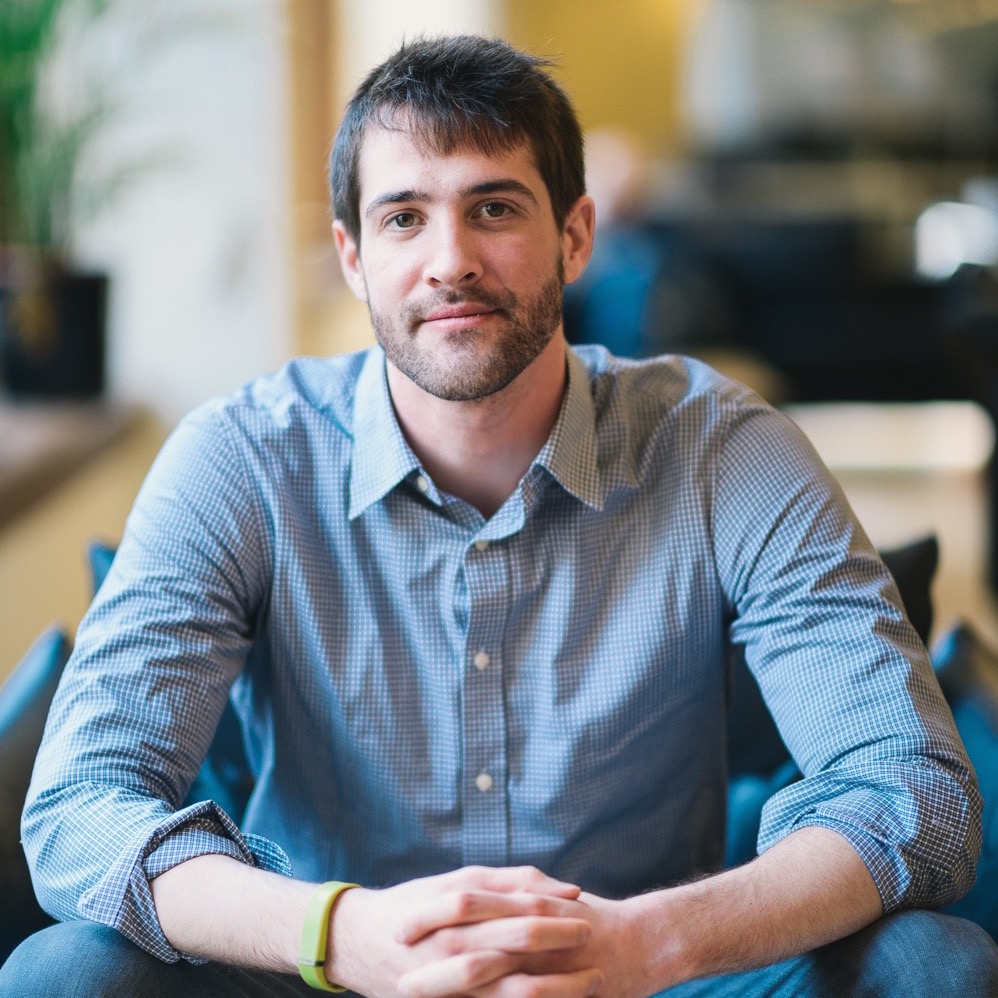
Eric Duffy, AB ’10, is making waves in the tech world thanks to the success of his company Pathgather, a learning management and social networking platform that lets businesses manage in-house education and training of employees. As CEO, Duffy has raised $3.6 million in venture capital and counts Qualcomm, Twitter, Walmart, Visa, and HP as customers. The 26-year-old was named to Forbes 2016 30 under 30 in enterprise tech, and along with his co-founder, Jamie Davidson, graduated from TechStars, an elite New York startup accelerator.
This all from an architecture major.
“Architecture is a great education in design and thinking through problems,” Duffy says. “It served me really well in thinking deeply about how to build a platform that taps into what motivates people and solves their issues.”
When he started at WashU, Duffy hadn’t thought about being an entrepreneur until he learned about social business, which try to serve humanity’s greatest needs and count impact as well as profit as key business outcomes.
When he graduated, Duffy signed up with ThinkImpact, a group that uses design thinking to create businesses that solve pressing problems. With them, Duffy went to a village of just a few thousand people near Kruger National Park in South Africa to start a water-cistern business with a small team.
“This particular village had only gotten electricity about six years before I got there,” he says. “But within that short time frame, a number of people already had cell phones and were, therefore, connected to the Internet and as a result had access to the world’s best learning resources.”
The prospect of universally accessible, low-cost learning resources was captivating. But Duffy knew online learning still had a ways to go before it could realize its full potential. “The question was, can you create a platform that will enable people to find the best learning resources and leverage them toward a job or career or wherever they want to go,” he says.
Duffy didn’t act on his idea right away. Instead, he taught design, English and architecture in China for a year. But when he came back to the states in 2012, he enrolled in the Founder Institute, an early-stage–startup accelerator that helps those with an idea for a business learn all the basics, such as prototyping, legal issues and marketing.
Duffy didn’t have the computer science know-how to create the learning platform he envisioned, but he used his design skills to make a mockup of the product and began telling people about his idea. In early 2013, a fellow WashU alum introduced Duffy to Jamie Davidson, who would become Pathgather’s chief technology officer, and together, they began creating their platform.
They’d envisioned selling Pathgather directly to consumers, but Qualcomm, a wireless technology company, saw the mockup and contacted the young team. Turns out, Qualcomm had been envisioning something similar for their employees. By the summer of 2013, Pathgather had its first client, and had pivoted from selling to consumers to selling to businesses.
“Despite the pivot, the vision of the company has not really changed,” Duffy says. “We want to make sure that the skills people have match the demand for those skills in the marketplace.”
By February 2014, Pathgather was launched and in use by thousands of employees. The user-centric interface, which has been hailed as “beautiful, effective and empowering,” is more than just a catalog of instructional videos and course offerings pulled from platforms including Coursera, YouTube, TED, Udacity and others. It also connects to a company’s internal training programs, cloud storage and any paid-content vendors the company subscribes to. Individual users rate the courses, create learning paths that describe where to start and what to take next, and track accomplishments so they can earn recognition.
Pathgather has been getting a lot of notice and for good reason. “[Eric] has an unrelenting desire for quality in the product,” says Davidson. “He strives to build one of the best designed enterprise products around.”
For Duffy, though, it all comes back to addressing the world’s needs. “For the first time in human history, there is an opportunity for an equality in education,” Duffy says. “And that’s in part what the mission of Pathgather is. How do we get education into people’s hands to increase opportunity? It’s a long-term vision. But I think we’re moving in the right direction.”